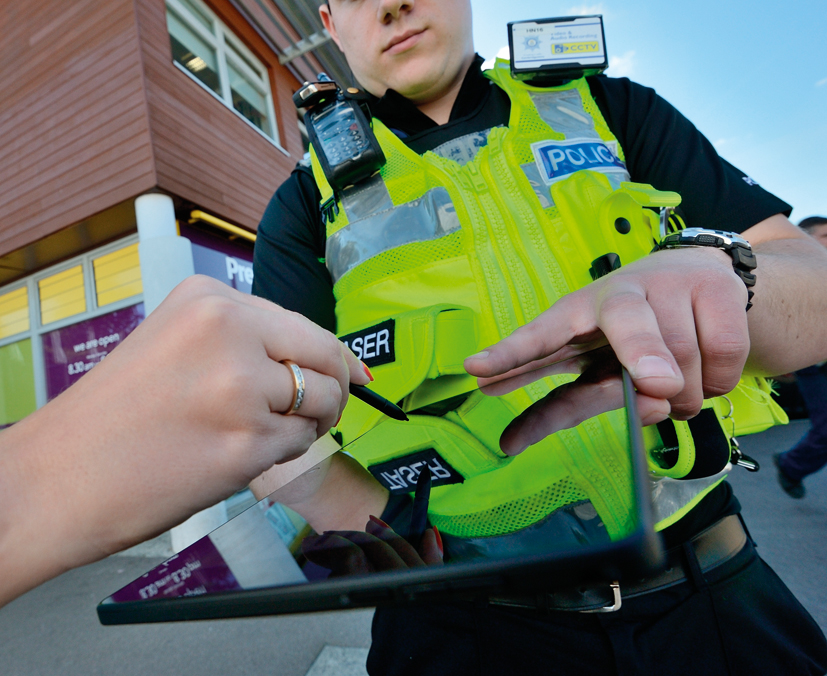Weve got your number
Every police force in the country is being offered free access to the National Mobile Phone Register for a trial period of six months. Detective Superintendent Eddie Thomson talks to Mat Hanrahan about the work of the specialist unit behind the register.

Criminals have always favoured goods that are easy to handle and can turn a profit wherever they are traded. In the last ten years the traditional criminal commodities of cash, precious metals and drugs have been supplemented by other potentially high-value items such as forged credit cards and stolen mobile phones. Unfortunately, in the case of the latter, the UK has become something of a market leader.
There are a number of reasons why mobile phone crime hit the UK so hard in the late nineties and early millennium. The UK was quick to deregulate its telecommunications infrastructure, and the early competition meant that handset subsidisation in the UK was extremely competitive and still is. A mobile bought for £50 on contract in this country can be resold for anything up to £800 elsewhere which is profit enough to support several tiers of middlemen and guarantees a strong export market for stolen devices.
At the same time, the UK also has a highly developed market for street drugs, and street criminals were quick to recognise mobile phones were a useful lifestyle accessory that were easy to get hold of and trade within the criminal economy.
Although the relationship between mobile phones and street crime was brought to the attention of UK ministers as far back as 1998, the first initiatives met with limited success. In 2001 and 2002, the National Criminal Intelligence Service (NCIS) and the Home Office published reports detailing the extent of the problem. Nationally, 45 per cent of street crime involved a mobile phone (in London the figure was 50 per cent) and in 30 per cent of these crimes a mobile phone was the only object stolen.
The Governments Street Crime Initiative in 2002 attempted to co-ordinate industry, police and the legislators in an effort to disrupt the illegal market for stolen phones. The telecommunications industry introduced controls within the carrier systems that enabled them to block their service according to the IMEI numbers programmed into each handset. The initiative was backed up by a public awareness campaign funded by the Home Office, the industry action group MICAF (Mobile Industry Crime Action Forum), and the police.
Under the slogan “stolen mobiles don`t work”, the immobilise campaign encouraged the public to make a note of their IMEI number and report lost or stolen phones to the industry and the local police. This is an ongoing project and people are still being encouraged to register IMEI numbers and serial numbers of any other valuable objects on the www.immobilise.com website.
In 2002 Parliament introduced the Mobile Telephone Reprogramming Act. Given that reprogramming IMEI numbers of stolen handsets was a relatively trivial process for criminals, the Act made it an offence to reprogram mobile phones, be engaged in a process of reprogramming mobile phones, or to be in possession of equipment that could be used for reprogramming.
Despite this an NCIS report in 2003 showed that mobile phones were still playing a significant role in street crime.
It was estimated that on average 700,000 were being stolen every year.
To co-ordinate policing efforts in tackling the problem, Assistant Commissioner Tim Godwin of the Metropolitan Police was given a national portfolio for mobile phone crime and tasked with developing an intelligence-led approach.
The formation of the National Mobile Phone Crime Unit in November 2003 spearheaded the battle against the blight. Based in London, the unit has 45 staff, including seconded officers from Greater Manchester, Merseyside, West Midlands, Avon and Somerset and the British Transport Police. The unit also has staff with a telecommunications background, who provide a valuable gateway to accessing resources on handsets, manufacturers and networks.
The unit is a textbook example of NIM-based policing. When formed it had a specific Level 1 focus and the strategy was to target the market for illegal phones – market stalls, car boot sales and shop premises offering illegal se



